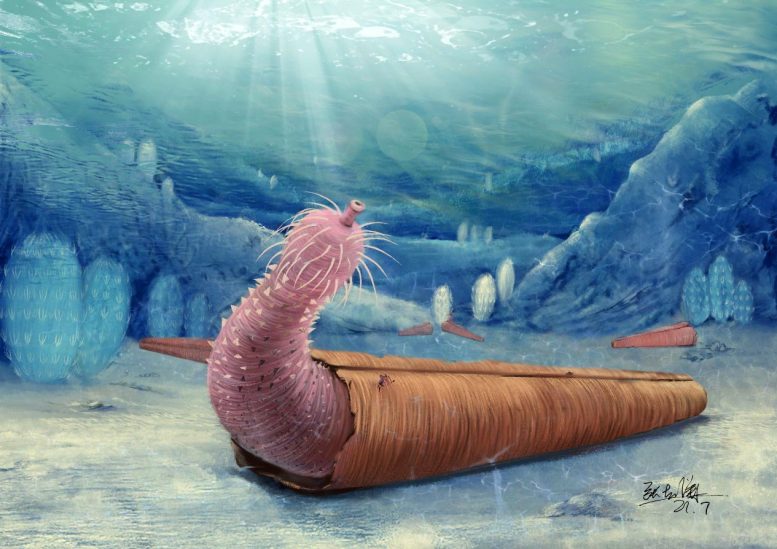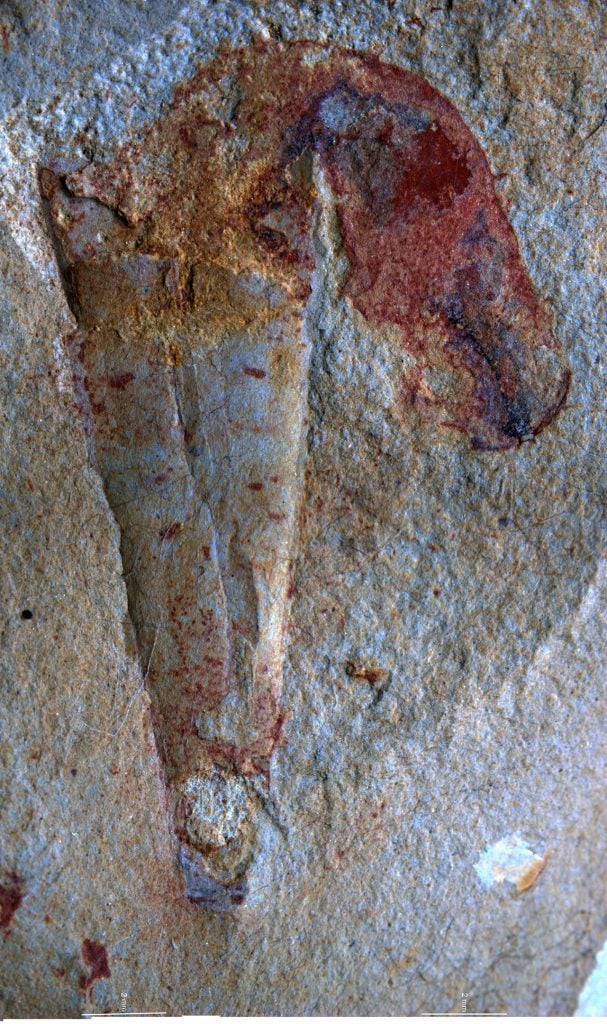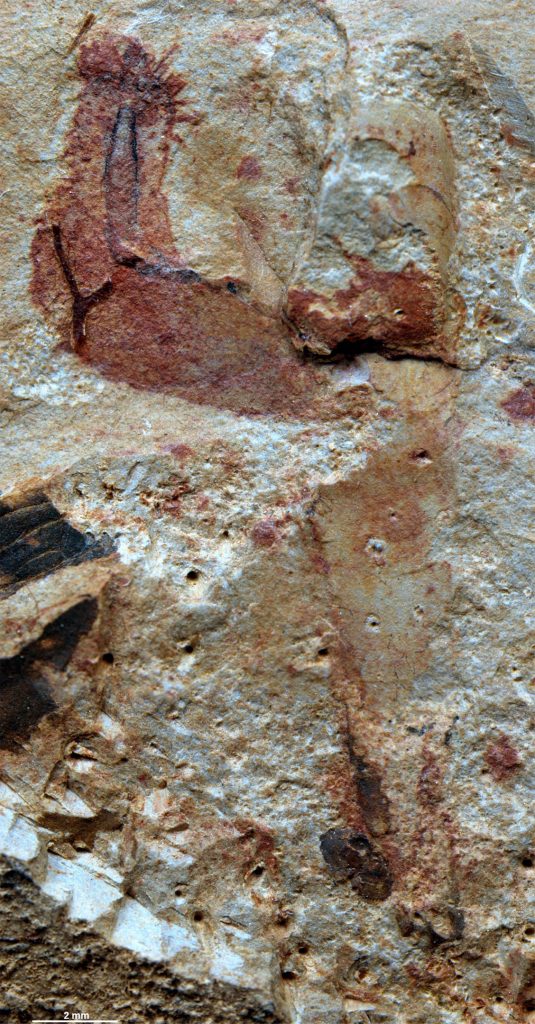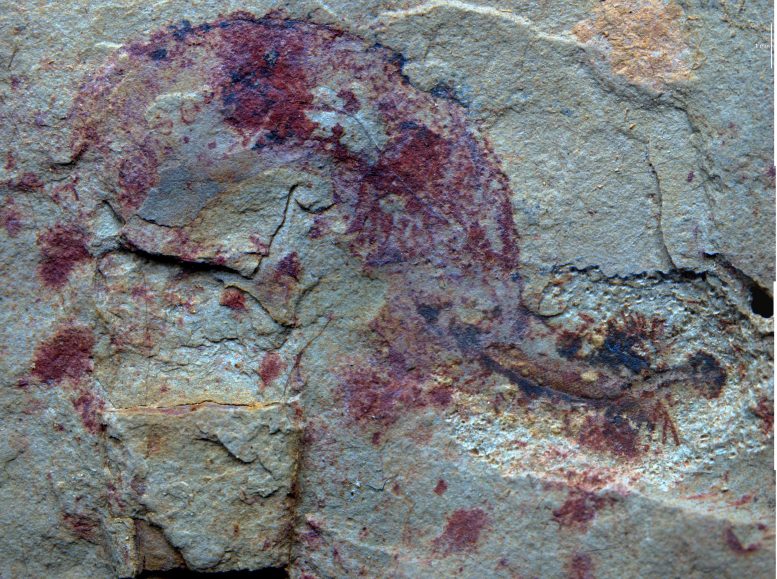Ancient Penis Worms Invented the “Hermit Crab” Lifestyle 500 Million Years Ago

The penis worm Eximipriapulus inhabiting a hyolith shell. Credit: Prof Zhang Xiguang, Yunnan University
A new study by researchers from Durham University and Yunnan University reveals that penis worms (Priapulida) invented the ‘hermit’ lifestyle, some 500 million years ago, at the rise of the earliest animal ecosystems in the Cambrian period.
Hermit crabs are well known for employing snail shells as shelters against predators, but researchers have now found that penis worms invented the ‘hermit’ lifestyle hundreds of million years before hermit crabs first evolved.
Researchers studied collections of the Guanshan fossil deposits – famous because they preserve soft tissue (such as the bodies of worms) alongside the shelly material that makes up the conventional fossil record.
Four specimens of the penis worm Eximipriapulus were found inside conical shells of hyoliths, a long-extinct fossil group.
“The worms are always sitting snugly within these same types of shells, in the same position and orientation,” explains Dr. Martin Smith, co-author of the study.
The researchers established that Cambrian predators were plentiful and aggressive, forcing the penis worms to take permanent shelter in empty shells.
Dr. Smith expands: “The only explanation that made sense was that these shells were their homes – something that came as a real surprise. Not long before these organisms existed, there was nothing alive more complex than seaweeds or jellyfish: so it’s mind-boggling that we start to see the complex and dangerous ecologies usually associated with much younger geological periods so soon after the first complex animals arrive on the scene.”
The research indicates the key role of predators in shaping ecology and behavior in the very early stages of animal evolution.
The study findings will be published in the journal Current Biology.
A “hermiting” lifestyle has never been documented or observed in living or fossil penis worms; nor has it been directly observed in any organism living earlier than the ‘Mesozoic Marine Revolution’ in the age of dinosaurs.
The fact that it evolved independently in the immediate aftermath of the “Cambrian explosion,” which marked the rapid rise of modern animal body plans, highlights the remarkable speed and flexibility of the evolutionary process.
Reference: “A ‘hermit’ shell-dwelling lifestyle in a Cambrian priapulan worm” by Xiao-yu Yang, Martin R. Smith, Jie Yang, Wei Li, Qing-hao Guo, Chun-li Li, Yu Wang and Xi-guang Zhang, 8 November 2021, Current Biology.
DOI: 10.1016/j.cub.2021.10.003



No comments:
Post a Comment